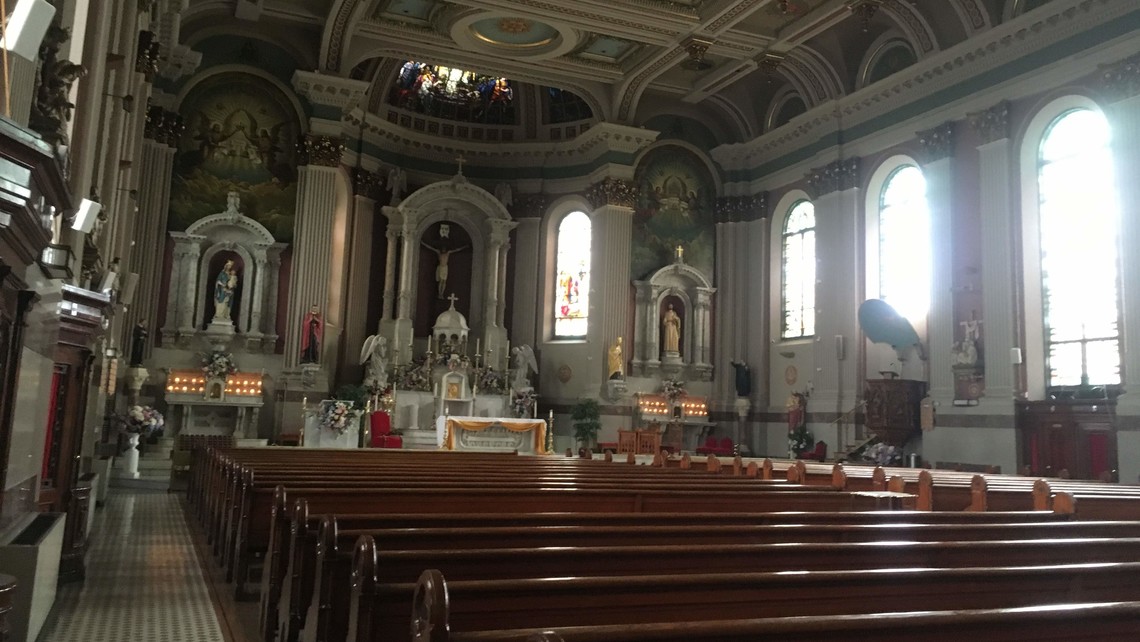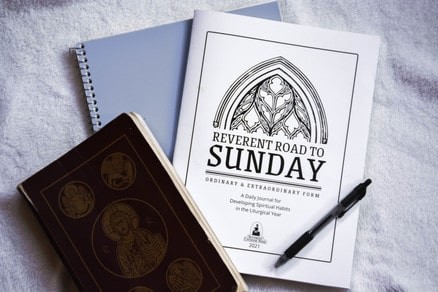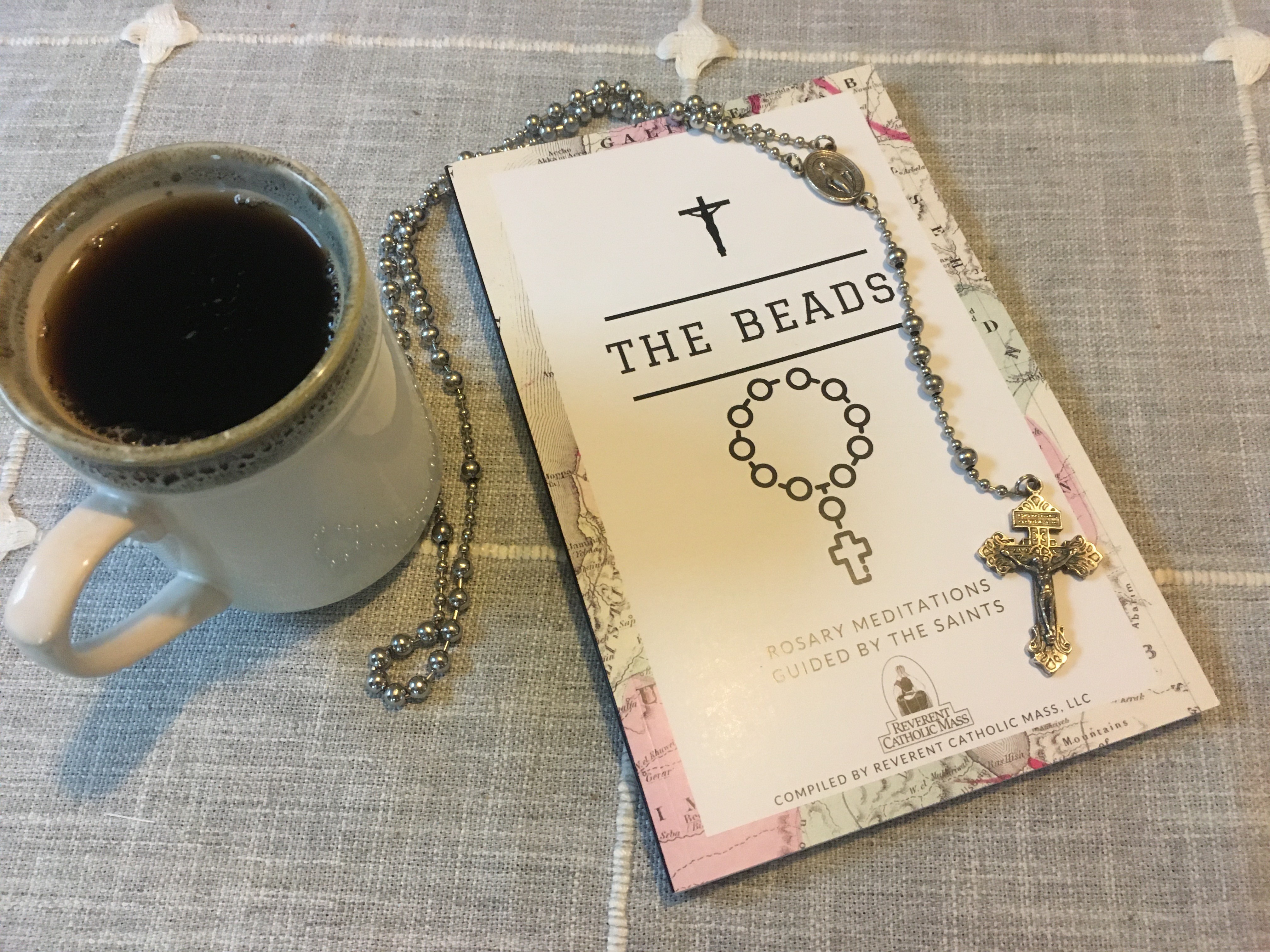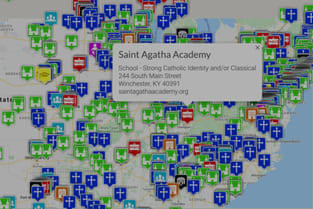
If you want more reverence in church and the Mass, then it begins with you. Check out these tips and thoughts to do your part to help transform the Church.
6 Ways to Personally Have More
Reverence in Church and at Mass
If you want see more reverence in church and at Mass, it all starts with you. You need to be the difference you want to see. We practice all of these recommendations and they take very little effort. If you are new to these practices, start with one at a time and incorporate a new one each week. It will help you physically live out the reality of the occasion of the Sacrifice of the Mass.
1. Silent Prayer Before Mass
This requires arriving early to Mass. In general, 15 minutes early is best. But if you have children or are caught up in a busy cycle, do your best to get there as early as you can. In general, you don’t want to show up right when Mass starts because you have no time to prepare for the gift that is about to be offered.
This could be a good time to:
- Give praise to God for His mercy and love,
- Read the Gospel and reflect on it,
- Think of petitions to offer the Mass for,
- Give thanks for all God has blessed you with,
- Silently reflect on the crucifixion.
2. Dress for The Occasion
Your attire signals to you and others that you are in the midst of someone important and are participating in a serious event. For Catholics, there is nothing more solemn and important then the Holy Sacrifice of Mass, and no one more important in life and Jesus Christ. Therefore, dressing reverently and respectfully is very important when coming to church.
The following is a recommendation.
In general, just use common sense. We are not in the camp of those who think women should not wear pants. So please just take these as a recommendation.
For Men
- Coat and tie
For Women
- Long dress/skirt that falls below the knees
- Shoulders covered
- No cleavage
Extra
- Chapel veil/mantilla – read more about chapel veils here.
3. The Our Father
It is good practice to avoid holding hands during the Our Father. Many people might not understand why this would be a problem.
What’s the harm in holding hands with my family during Our Father before Holy Communion?
When discussing reverence, we are not talking about preferences or how we individually feel about practices in the Mass. We are trying to ascertain the proper posture to orient our souls towards the vertical worship of God. When initiating hand holding, it compels others who may not want to hold hands because they find it distracting, to then participate in it, and therefore bringing their prayer to a more horizontal posture for the sake of affirming the community. The community is already affirmed by the act of praying the Mass together. Holding hands add nothing to the unitive aspect of this communal prayer and only has the potential to distract others from their desire to pray to our Father from their heart and soul without feeling obligated to join in the hand holding.
The more reverent and charitable posture is to refrain from holding hands and allow those who want to pray without distraction to do so.
4. Sign of Peace
The Sign of Peace is best practiced by reverently and discreetly bowing to the person to either side of you (not behind) and then refocusing on the fact that Jesus is truly present on the altar.
One must remember that the Mass has everything to do with the re-presentation of the crucifixion on Calvary. If everyone is more concerned with shaking their neighbor’s hands and carrying on, it distracts from the most important part of the Mass. At this time, you are about to receive Jesus in the Holy Eucharist. It should be very solemn and prayerful.
Unfortunately, in some churches, the Sign of Peace turns into a circus. People walk all over the church, the priest goes over to everyone in the front row. Then everyone pulls out their scented hand sanitizer to get rid of their neighbor’s germs.
Several well meaning people make the argument that this is how we show that we are a community of believers. But this is the wrong time for building community. This is the time to worship God in the Eucharist. The time to build community is before or after the Mass.
For those who want to be prayerful during this very solemn time, it can become exasperatingly distracting. Are we at Mass to be in communion with our Lord, or to carry on with our neighbors? There is a time and place for everything. Right after the consecration is a time for reverence and reflection.
5. Reception of Holy Communion
The default posture for receiving our Lord in the Holy Eucharist is kneeling and on the tongue. We kneel to lower ourselves as a sign of humbly signifying that we are of lower status than our Lord. He is the King of Kings and Lord of Lords and every knee shall bend in His presence.
We should receive on the tongue because our Lord give himself to us. In His mercy He offers Himself to us. Again, this is a sign of humility. We are docile to the Lord allowing Him to enter into us physically and spiritually. It is gentle and orients our bodies and souls in the proper disposition.
When receiving in the hand, it is a gesture of taking not receiving. Does this mean that those who receive in the hand are taking and mishandling our Lord? No. But no one other than the blessed hands of a priest should touch the Holy Eucharist.
Additionally, reception in the hand also lends itself to terrible abuses. The Eucharist is more likely to be dropped on the floor when taken in the hand or worse, the person could be stealing the Eucharist to use in sacrilegious practices. It also re-enforces the incorrect idea that the Mass is a re-presentation of the Last Supper instead of the Crucifixion. The Eucharist is a gift to be received. The best way to reverently receive this incredible gift is to allow Christ to enter by lowering yourself and gently and docilely allowing yourself to be fed.
6. Silent Prayer after Mass
In the same spirit as praying before Mass, it is a great habit to pray after the Mass has ended for a few minutes. Reflect on the gift. Give thanks for the Mass. Pray for those who were unable to come to Mass or unable to receive the Holy Eucharist. Pray for a good week and the conversion of sinners. Just take some time with Christ in front of you in the tabernacle, knowing that He is in you physically and spiritually, and pray.
The Big Don’t
It is terrible form to leave right after Communion before the Mass has ended. There is never a good reason to do this and it signals that the great gift just received was instead taken and other worldly things are more important. We should avoid “squeezing Mass in” or having the attitude that, “at least I came at all”. We want to take our time, remember what we are really doing in the scheme of things, and reflect.
Conclusion
These are things you can do immediately as you attend Mass and try to foster an attitude of reverence in your life. As you do them you must do them for the right reasons. Do not engage in pious devotions and practices as a show for others to see how “holy” you are or to calling attention to yourself. This is about giving glory to God.
If you are stuck going to a church that is full of distractions and makes it more difficult to enter prayerfully into the Mass, you can still do these things. Do your best and never feel compelled to hold hands or participate in novel practices that are counter to the reality of Christ’s presence in the Eucharist.
If it's not possible to attend Mass in a prayerful atmosphere, then check out the Map and see if there is a church listed near you!
PAX,
Tony and Kendra



